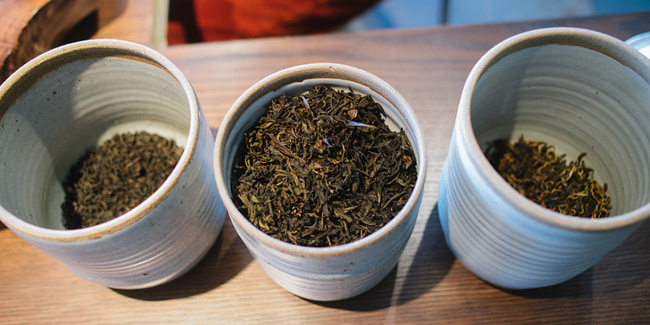
“We’re flavor nerds,” says David Duckler of Verdant Tea. “I thought when I started doing tea that I was a tea nerd, but I’ve come to realize actually I love flavor.”
Verdant Tea’s teahouse at 2111 E. Franklin Avenue is less a place you go to buy a beverage, and more a place you go to sample the output of an extremely ambitious and fast-moving flavor laboratory. Beyond the cafe’s mixological approach to creating tea-derived beverages, the space boasts the boundary-pushing ice cream of Sweet Science and is soon to be graced by a periodic congee bar and an ambitious kombucha program.

It also offers one of the most singularly interesting spins on chai available anywhere, full stop. That chai has become more of a thing is evident, with local artisanal purveyors like Gray Duck reinventing a beverage that for years has been little more than harsh, aggressive spice concentrate squirted into over-sweetened milk. But Verdant Tea’s chai (which you can sample either at the teahouse or at this weekend’s North Coast Nosh) is built not just from a complicated combination of spices, but also from a base that starts with tea — three different teas, to be exact.
“[The base tea] Laoshan black has beautiful malt and chocolate notes that engage the side of the palate — they’re almost savory,” says Duckler. “It has a honey-like aftertaste, but for the purposes of chai, it’s not giving me what I want on the tip of my tongue in terms of caramel sweetness and it doesn’t have the thickness or body to stand up to the milk.” Those properties come from two other teas: a roasty, sweet oolong and a Yunnan black tea that Duckler describes as “infamously full and thick.”
“Laoshan black is a beautiful tea when you steep it up on its own, but the nature of chai is to engage every part of the palate and have this long, lingering aftertaste,” says Duckler, explaining why the shop’s chai starts with three components. After that, the tea (which is mellowed out by almond milk, a milk lighter on the palate than its dairy cousin) is sweetened by three more elements: “The main component is clover / basswood honey,” says Duckler. “We use a smaller proportion of buckwheat honey, which supplies this rich, dark flavor that brings out the earthy side of Laoshan black. We also use a smaller portion of raw cane sugar to add some brightness to it. It’s not until you add the right sort of honey that the flavors bind.”

The chai’s spice blend is a contribution of Verdant team member Brandon Lovejoy, whose background in Chinese herbalism and ayurvedic medicine helped him navigate the labyrinth of decisions that go into determining spices, ratios, and preparation methods to create a great chai.
And great the chai is. Sip it hot, and the beverage is a delicate dance of sweet and hot, an alchemical concoction with notes of goji berries, Thai ginger, and black peppercorns. The layers of flavor are bright and distinct, and you can flip through them like pages in a book, or you can just drink the stuff and savor it. It warms the taster with its temperature, but also with the gentle, balanced burn of its spice. “A lot of people will drink the chai and feel chai-drunk afterwards!” says Duckler. “Because you’ve got that warmth in the chest, like a glass of good wine, or Scotch.”

Iced, it’s a completely different animal. You lose the aromatics and the intensity of spice, and instead taste more of the tea and honey on the back end of each sip. It’s bright, refreshing, and difficult not to simply gulp down at a gallop, which is what we did.
Verdant Tea House, 2111 E. Franklin Ave; 612.223.8907
